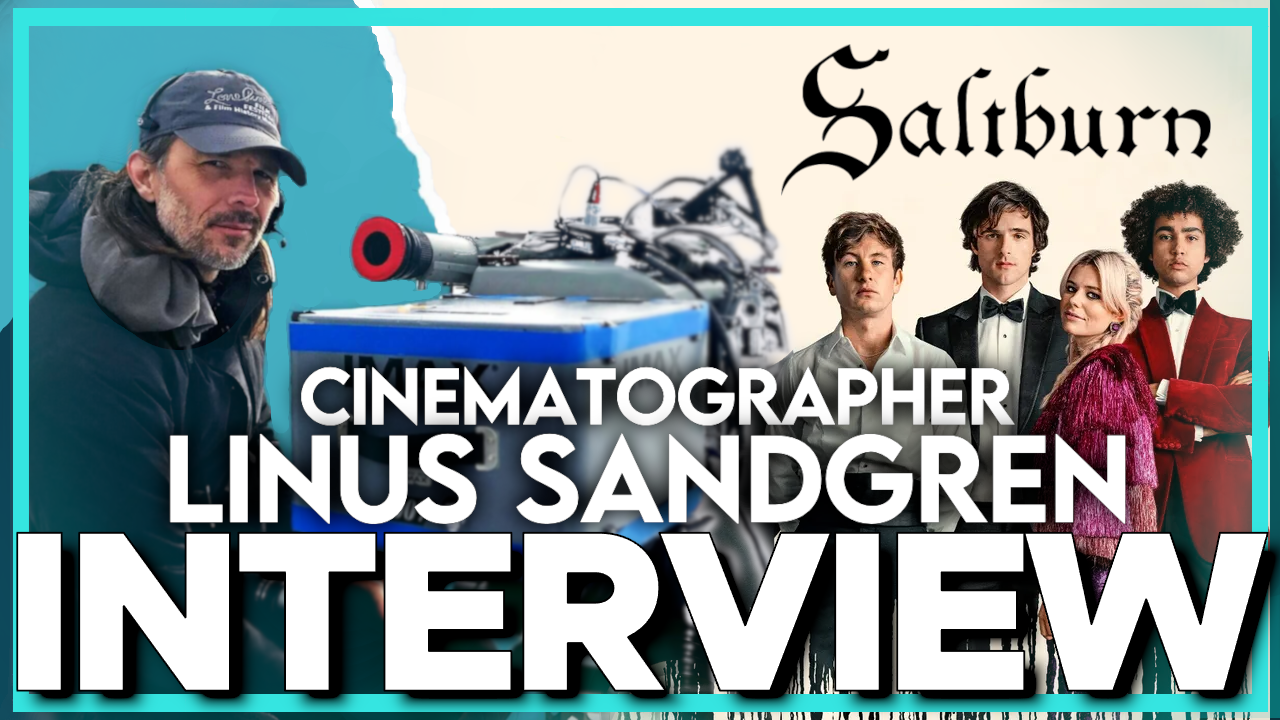'Saltburn' Cinematographer Linus Sandgren Talks Shooting The Aristocratic Dark Comedy
The Oscar winning cinematographer joins filmspeak to talk about the cinematography process on his newest work, ‘saltburn’.
Oscar-winning cinematographer Linus Sandgren has become one of the most in demand talents in Hollywood. His acclaimed imagery and visual style have spanned the likes of a comet-based comedy, a Bond film, sweeping collaborations with Damien Chazelle, and more, all in the young decade alone. His latest project, ‘Saltburn’ is a sharp dark comedy follows an outsider’s journey into the titular aristocratic mansion, with twists, turns and intrigue galore. Sandgren’s cinematography, as always, is a visual marvel, accentuating the layered themes and emotions of the film. Sandgren sat down with FilmSpeak to discuss his creative process behind the alluring look of Saltburn.
The full interview with Linus Sandgren can be found below.
Warning: The interview contains minor spoilers in regards to events within the film.
On his inital visions of Saltburn’s look, and collaborating with director Emerald Fennell;
“We came into the whole idea of it, [Saltburn] being a sort of vampire movie, in a sense, making it as vampire-esque as it could be, embracing the darkness within the environments, and characters. And with that as well, bringing out the sort of painterly type qualities of the house, to keep sort of a secret. We kind of worked ourselves into these ideas together. The script was very visual, it was a script that I easily envisioned as I read it, but I still had to sort of back myself out of those initial ideas, in order to create this cinematic language with the director, so then I can start to decide on lighting, things like that.
On how the film’s two central locations and their aesthetics informed the cinematography;
“I tried to think that my choices were more related to emotions, rather than locations. But, it happens so that inherently, these locations are sort of like characters. Oxford has a lot of history, and so we wanted to find somewhere that would have the feeling of a history and a rich culture of so many years. At the same time, we wanted to isolate Oliver from the rest of the kids. The school, Oxford was kind of perfect for us, as the bar windows sort of looked like prison cells. That made our choice clear, it was large, gothic and old, and it informed us, it gave us the ability to use emotional storytelling, using the windows, shadows of the locations to make [Oliver] seem isolated, and similar things in other scenes, and we played with these things a lot in Oxford.
“For Saltburn, we kind of wanted it to feel like it was carrying a secret. You didn’t know where this was gonna go, so we indicate where it’s not going to be normal, so that perhaps the house was haunted. It was also quite nice to use the vibe of the house feeling so old, with the sense of history, and it’s kind of the main character, moreso than Oliver in a sense, it’s like the house will be there long after Oliver and the Cattons were. It helped us to create lights, like with the Baroque painting, dramatic lighting, like Caravaggio’s was, just very useful with this house with all of these windows, looking up the staircase was goregous, lots of symbolism within the art, like the statues outside.”
“What’s different here to other things like Bond, where you travel all over the world, and see all of these locations, is that you have these two locations, where you need to hone in on the emotions, all the time, to get even deeper internally. I loved the challenge, of doing something completely different. So I said, “Let’s go inside properly, into these characters, instead of the external journeys, and in this film, it was very interesting to see where we could take it with these actors, and the duality of the characters, playing double roles all the time.”
On the use of the color red in the film’s cinematography;
"We had the heart of the film, the staircase, with the birthday party, drenched in red lighting, and we isolated [Oliver] with the yellow handles, and he gets singled out in a place with hundreds of people around him. Visually, it’s sort of that aesthetic of early German expressionism, with the black and white, 20’s movies. Even though it’s colour, it’s secluded. The film has a lot of sort of stark, black and white images, but it’s in colour, and the great thing you can do with colour is signal something. Red, it can be death, it can be lust, internal feeling, it’s a great color and expression for this film.”


